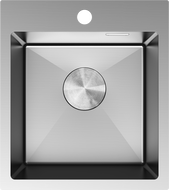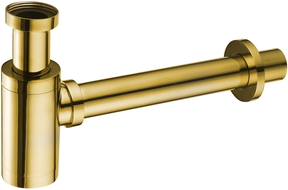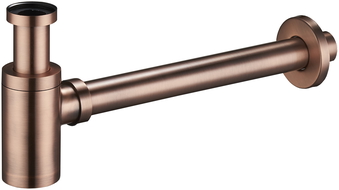
The problem of the siphon under the sink not being tight affects many people. This is not always caused by the same factor, so we must approach each case individually. However, it is worth checking the most typical causes, as excluding them will allow us to find a solution more quickly. If, however, the siphon is completely clogged, it is best to call a professional who can assess how badly the pipes are blocked.
Sink siphon – what causes water to leak?
There can be many causes of any failures related to leaking water. Most of them are caused by improper assembly of the individual components. In other cases, the entire situation is due to a worn-out seal that allows water to leak through freely. At other times, this problem is caused by a cracked siphon, which in such a case should only be replaced. Another possible reason may simply be a loosely screwed design. In such cases, it is enough to reach for the appropriate tools and simply tighten all the components.
Depending on what pipes make up the whole, the initial reasons for elimination differ. For example, if the pipes are plastic, the cause may be an issue with the seals and nuts. In this situation, it is worth unscrewing them and taking them to the store as a reference. After purchasing new ones, they should be screwed back in and checked to see if the situation has improved. When considering a potential cause, look for users on internet forums who have started similar topics. This way, there is a chance that you will find key information. Perhaps someone else has exactly the same siphon and sink in their home and it will be easier for you to understand the situation.
Leaking sink siphons – what to do in such a situation?
If you see that water has started to leak in your kitchen, you must address this problem as soon as possible to prevent the situation from worsening. Neglecting this issue with single drops of leaking water could one day turn into a more serious problem. Therefore, as soon as you notice that not everything is functioning properly, make sure to investigate the matter. A problem with a leaking siphon located under the sink may actually be a rather uncomplicated issue that you can solve by yourself. In such a case, calling for plumbing assistance may not be necessary.
On the internet, you will find many users who have clearly presented the subject of replacing seals or sealing a siphon. With their help, you will surely quickly deal with the problem. However, if you see that no solution yields results, contact a plumbing emergency service, which will certainly help you with this issue.
So what can you do by yourself?
- First of all, be sure to stop the water flow.
- You can temporarily close the drain using a cap or let the water that was left in the sink drain out. This way, you will temporarily stop the problematic outflowing water, but you will also block the ability to use the sink. Once you eliminate the water source, look under the sink.
- Do you see any external causes that could lead to the failure? If not, you need to prepare to handle it by yourself.
- You can apply temporary solutions that will allow you to forget about the problem for some time, but you can also conduct minor renovations and replace individual components such as the siphon, seals, or other elements found in the whole structure - the list of specific actions to be taken depends on what has failed (it could be pipes, seals, etc.).
Siphon under the sink and seal replacement
The most typical cause of leaking pipes and water is an already worn-out seal that cannot block the water anymore. In this situation, the issue is not that complicated, and you can easily resolve it. Start by blocking the water supply so that you do not accidentally turn on the faucet while replacing the seal. However, before you do that, let a little water flow to locate the exact leak spot. Once you know where the water is leaking, unscrew the nut where the silicone seal is located.
If you have a seal of the correct size at home, the problem will soon be completely resolved. However, if you do not have a seal at home, you need to go to the store to buy a new one to replace the old one. It is best to take the old seal with you to ensure you select the right size for the new seal. Restore everything to its original form by screwing the nut back in. Turn on the faucet and allow a small amount of water to flow out. Observe whether the situation has changed. Usually, an outdated seal is the problem, so upon its replacement, the situation is resolved.
Another situation where a water leak occurs may be a problem with the siphon. The issue is a bit more complicated if we have noticed mechanical damage to the siphon. In this case, replacing this component is highly recommended, but we may not always have that option. In such cases, it is worth reaching for silicone, which we can use to temporarily seal the gap through which water is leaking. A suitably strong and durable tape can also help. Of course, these are "quick fixes" because if something has actually cracked or dried out, then tough - you simply have to replace it with a new part.






















